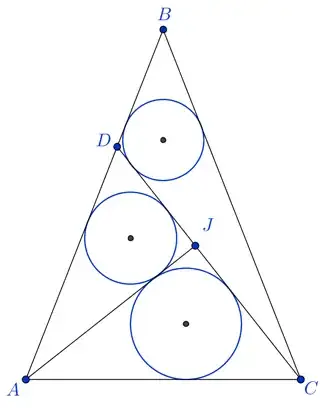In $\triangle ABC$, $AB = BC$. If one chooses $D$ on $AB$ and $J$ on $CD$ such that $AJ \bot CD$ and the incircles of $\triangle ACJ$, $\triangle ADJ$, and $\triangle BCD$ all have radius $r$, then $r = AJ/4$.
How to prove it?
It is easy to notice that $r_{AJD}=r_{AJC}$ implies that $J$ is the midpoint of $CD$, since $AJD$ and $AJC$ are right triangles sharing a leg. How that relates to $r_{BCD}$?
